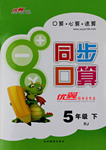题目内容
Helen devoted herself ________ to her research and became a top scientist in the field of applied physics.
- A.seriously
- B.extremely
- C.entirely
- D.strictly

 优翼小帮手同步口算系列答案
优翼小帮手同步口算系列答案Mr. Smith invested a large amount of money in the city of Qingdao, from which he will _____ a lot in the future.
|
A.benefit |
B.result |
C.contribute |
D.devote |
Usually, when your teacher asks a question, there is only one correct answer. But there is one question that has millions of correct answers. That question is “What’s your name?” Everyone gives a different answer, but everyone is correct.
Have you ever wondered about people’s names? Where do they come from? What do they mean?
People’s first names, or given names, are chosen by their parents. Sometimes the name of a grandparent or other member of the family is used. Some parents choose the name of a well-known person. A boy could be named George Washington Smith; a girl could be named Helen Keller Jones.
Some people give their children names that mean good things. Clara means “bright”; Beatrice means “one who gives happiness”; Donald means “world ruler”; Leonard means “as brave as a lion”.
The earliest last names, or surnames, were taken from place names. A family with the name Brook or Brooks probably lived near a brook (小溪); someone who was called Longstreet probably lived on a long, paved road. The Greenwood family lived in or near a leafy forest.
Other early surnames came from people’s occupations. The most common occupational name is Smith, which means a person who makes things with iron or other metals. In the past, smiths were very important workers in every town and village. Some other occupational names are: Carter—a person who owned or drove a cart; Potter—a person who made pots and pans.
The ancestors of the Baker family probably baked bread for their neighbors in their native village. The Carpenter’s great-great-great-grandfather probably built houses and furniture.
Sometimes people were known for the color of their hair or skin, or their size, or their special abilities. When there were two men who were named John in the same village, the John with gray hair probably became John Gray. Or the John who was very tall could call himself John Tallman. John Fish was probably an excellent swimmer and John Lightfoot was probably a fast runner or a good dancer.
Some family names were made by adding something to the father’s name. English-speaking people added –s or –son. The Johnsons are descendants of John; the Roberts family’s ancestor was Robert. Irish and Scottish people added Mac or Mc or O. Perhaps all of the MacDonnells and the O’Donnells are descendants of the same Donnell.
1.Which of the following aspects do the surnames in the passage NOT cover?
|
A.Places where people lived. |
B.People’s characters. |
|
C.Talents that people possessed. |
D.People’s occupations. |
2.According to the passage, the ancestors of the Potter family most probably _______.
|
A.owned or drove a cart |
B.made things with metals |
|
C.made kitchen tools or containers. |
D.built houses and furniture. |
3.Suppose an English couple whose ancestors lived near a leafy forest wanted their new-born son to become a world leader, the baby might be named ________.
|
A.Beatrice Smith |
B.Leonard Carter |
|
C.George Longstreet |
D.Donald Greenwood |
